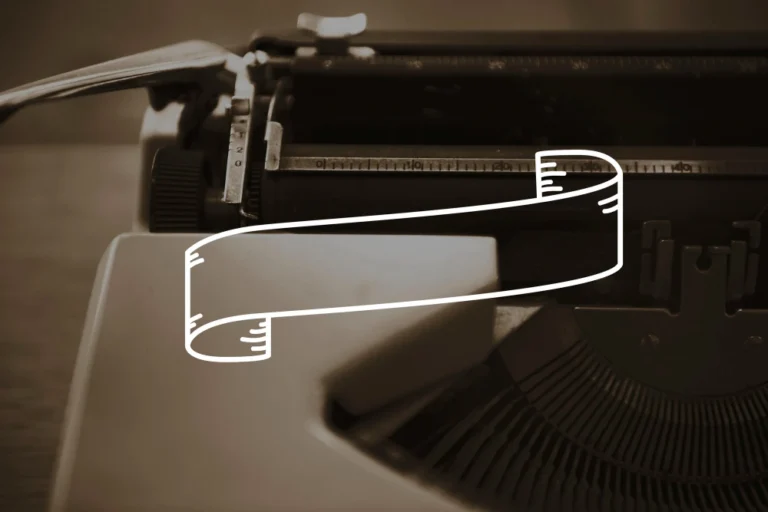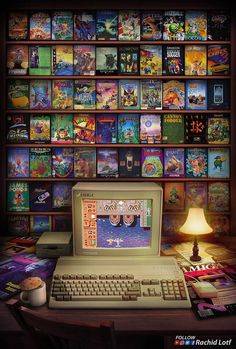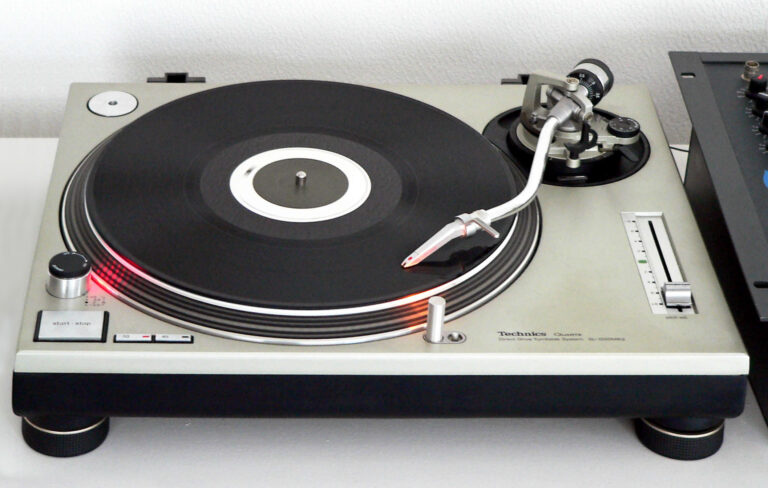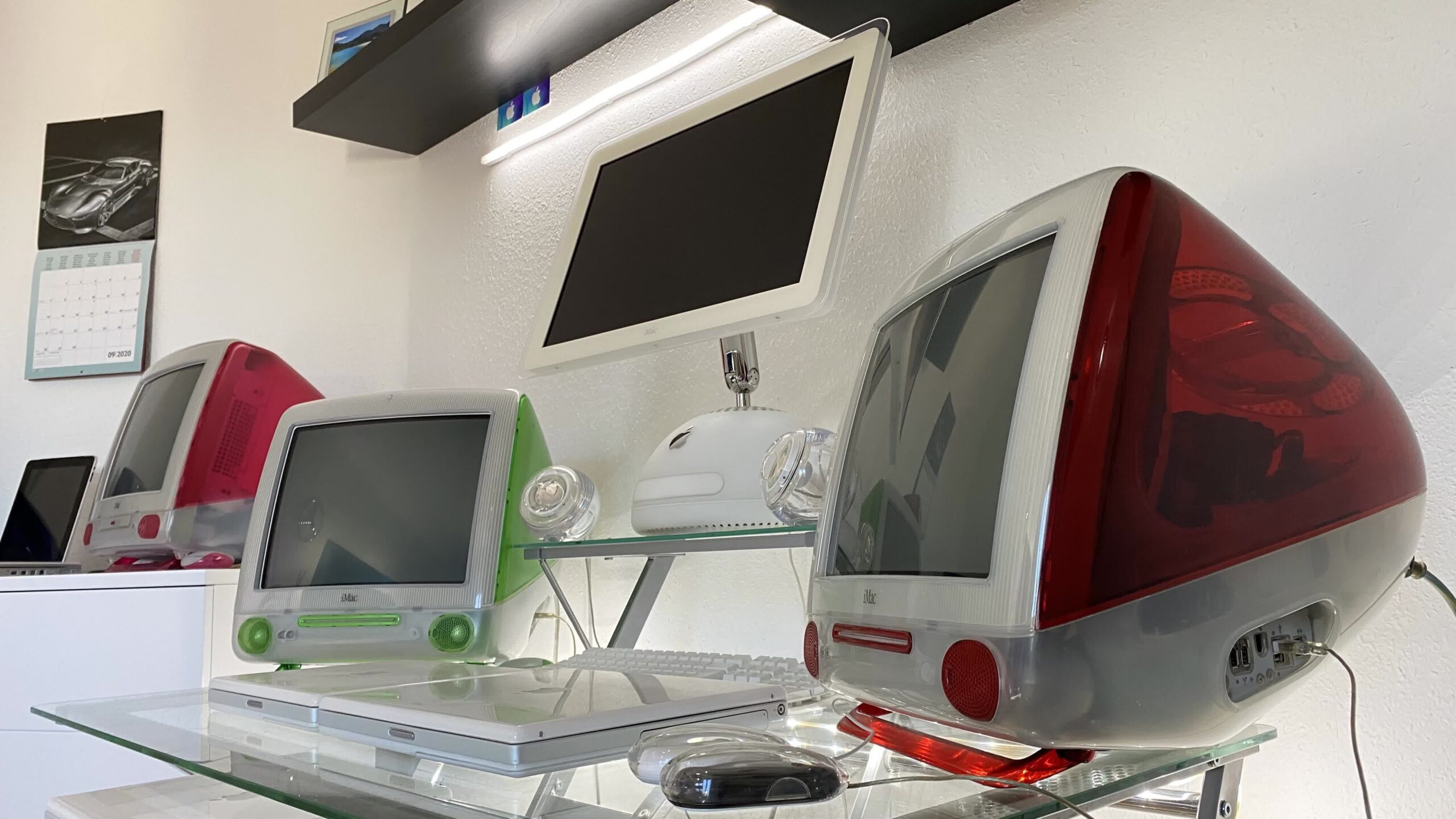
Beige, boxy, and boring—that was the standard for 90s computers. They were necessary appliances, not objects of desire. That all changed in 1998 with the return of Steve Jobs and the Apple iMac G3 revolution. This wasn’t just a new computer; it was a colorful, all-in-one bombshell that traded beige for “Bondi Blue,” proving a computer could be powerful, personal, and profoundly cool.
With its curvy, all-in-one design, stunning translucent Bondi Blue shell, and playful attitude, the iMac G3 didn’t just challenge the status quo; it obliterated it. It was approachable, easy to set up (“Step 1: Plug in. Step 2: Get connected. Step 3: There is no step 3.”), and most importantly, it was cool [Google Search].
More than just a computer, the iMac G3 was a statement piece, a cultural icon that revitalized Apple and kickstarted a design revolution that rippled through the tech industry and beyond. Let’s look back at how this colorful computer changed everything.
The Dawn of “Chic, Not Geek”: Reimagining the Personal Computer
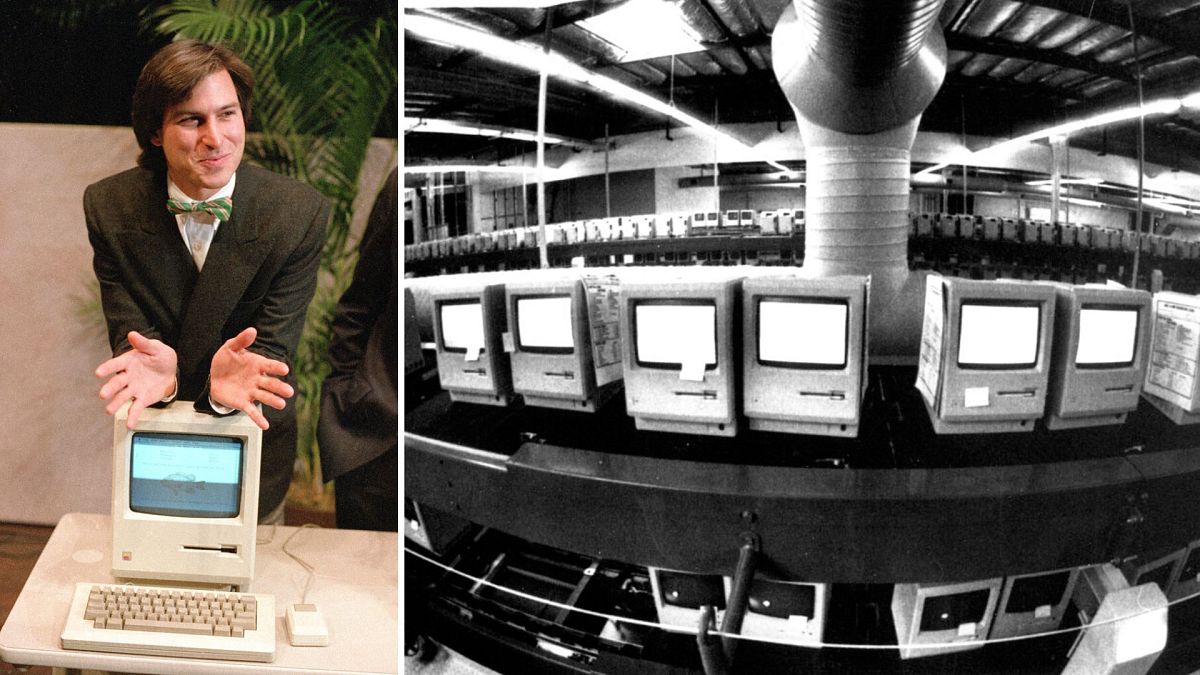
The mid-1990s were dark times for Apple. Declining market share, a confusing product line, and financial struggles had pushed the company to the brink [Google Search]. Steve Jobs’ return in 1997 marked a crucial turning point. He quickly moved to simplify the product lineup and refocus the company on innovation and design [Google Search]. One of his primary goals was to create a new, affordable, all-in-one consumer computer designed for the internet age [Google Search].
The task fell to Apple’s industrial design team, led by a young British designer named Jony Ive [Google Search]. Jobs and Ive formed a close partnership, sharing a vision for products that were not just powerful but also beautiful and user-friendly [Google Search]. Instead of starting with technical specs, the design process for the iMac reportedly began by asking: “How should people feel when using the computer?” [Google Search].
Key elements behind the iMac G3’s conception:
- Steve Jobs’ Vision: A mandate for a simple, affordable, all-in-one, internet-ready consumer Mac [Google Search].
- Jony Ive’s Design Philosophy: A focus on emotional connection, simplicity, and exploring new materials and forms [Google Search].
- Breaking the Mold: A conscious effort to move away from the intimidating, utilitarian beige boxes that dominated the PC market [Google Search].
- Speed and Collaboration: The design and engineering teams worked under intense pressure, delivering the final product in less than a year [Google Search].
Jobs initially rejected the ovoid, teardrop shape proposed by Ive’s team, but Ive successfully argued for its playful, approachable nature [Google Search]. The decision to use translucent plastic, inspired by things like candy and beach glass, was radical, requiring new manufacturing techniques and making the inside of the computer part of its aesthetic.
The Evolution of an Icon: Colors, Refinements, and Legacy

The iMac G3 wasn’t a static product; it evolved significantly during its five-year run (1998-2003).
- The Original (August 1998): Launched exclusively in Bondi Blue. Featured a 233 MHz PowerPC G3 processor, 32MB RAM, 4GB hard drive, CD-ROM drive, built-in 15-inch CRT monitor, modem, Ethernet, and crucially, USB ports instead of legacy Apple ports (like ADB and serial). It also famously ditched the floppy disk drive, a controversial but forward-looking decision pushing users towards CDs and the internet.
- “Five Flavors” (January 1999): Apple introduced five bright new colors: Blueberry, Grape, Lime, Strawberry, and Tangerine, alongside a speed bump to 266 MHz. The “Yum!” marketing campaign emphasized choice and personality.
- Slot-Loading Models (October 1999): A significant redesign featuring a quieter, fanless operation (for lower speeds), improved speakers (Harman Kardon), faster processors (up to 400 MHz), a slot-loading CD or DVD drive (fulfilling Jobs’ original vision), and built-in support for AirPort wireless networking [Google Search]. New colors like Graphite were introduced.
- Further Refinements (2000-2001): Later models introduced more colors and patterns (Indigo, Ruby, Sage, Snow, Blue Dalmatian, Flower Power), faster G3 processors (up to 700 MHz), improved graphics (ATI Rage 128 Pro/Ultra), CD-RW drives, and FireWire ports [Google Search].
- Educational Models: Lower-cost versions were popular in schools [Google Search].
- Successors: The iMac G3 was eventually replaced by the radically different, lamp-like iMac G4 (2002), followed by the iMac G5 (2004) which integrated components behind the flat panel display, the transition to Intel processors (2006), the aluminum unibody designs (2007 onwards), Retina displays (2014), and finally the colorful M-series Apple Silicon iMacs (2021) which echo the G3’s playful spirit.
Throughout its life, the G3 remained an all-in-one, CRT-based machine, but its internal specs and external personality evolved considerably.
“Technical” Specs: iMac G3 vs. The World (Then & Later)

How did the iMac G3 compare technologically, both to its contemporaries and successors?
| Feature | Typical “Beige Box” PC (1998) | iMac G3 (Bondi Blue, 1998) | iMac G4 (Flat Panel, 2002) |
| Processor | Pentium II (~233-300 MHz) | PowerPC G3 @ 233 MHz | PowerPC G4 @ 700/800 MHz |
| RAM | 32-64MB SDRAM (Typical) | 32MB SDRAM (Upgradable) | 128-256MB SDRAM (Upgradable) |
| Storage | 4-8GB IDE Hard Drive | 4GB IDE Hard Drive | 40-80GB IDE Hard Drive |
| Removable Media | Floppy Drive + CD-ROM | CD-ROM Drive (No Floppy) | CD-RW/DVD “SuperDrive” |
| Display | Separate CRT Monitor (14-17″) | Integrated 15″ CRT | Integrated 15″ LCD |
| Graphics | Separate AGP Card (2-8MB) | ATI Rage IIc/Pro (2-6MB) | NVIDIA GeForce2 MX (32MB) |
| Ports | Serial, Parallel, PS/2, USB (Optional/Later) | USB (x2), Ethernet, Modem | USB (x3), FireWire (x2), Ethernet |
| Design | Separate Tower, Monitor, Speakers | All-in-One, Translucent | All-in-One, Adjustable LCD |
| Setup Ease | Moderate (Multiple cables) | Very Easy (Few cables) | Very Easy |
Export to Sheets
While not always the absolute fastest machine on paper, the iMac G3 offered a well-integrated package focused on ease of use, internet connectivity (built-in modem and Ethernet were key), and revolutionary design. Its adoption of USB and ditching legacy ports/floppy drive were bold moves that pushed the industry forward.
Cultural Impact: Thinking Different, Looking Different

The iMac G3’s influence went far beyond Apple’s bottom line.
- Saving Apple: The iMac G3 was a massive commercial success, selling hundreds of thousands of units quickly and playing a critical role in pulling Apple back from the brink of bankruptcy. It proved Jobs’ strategy of focusing on design and user experience was viable.
- Making Computers Fashionable: It single-handedly made the personal computer a desirable consumer electronic and a design object. Color choice allowed for personal expression; it wasn’t just a tool, but part of your home’s decor [Google Search]. “Chic. Not Geek,” as the ads proclaimed [Google Search].
- The Translucent Trend: The G3’s colorful, see-through plastic aesthetic sparked a massive trend in consumer electronics and other products throughout the late 90s and early 00s. Everything from game consoles (Nintendo 64 colors) to staplers and inflatable chairs adopted the look.
- Simplifying Computing: Its all-in-one design and easy setup demystified computers for many first-time buyers, making technology feel more accessible and less intimidating [Google Search].
- Driving USB Adoption: By ditching legacy ports entirely in favor of USB, Apple forced peripheral manufacturers to adopt the new standard, accelerating its widespread use.
- “Think Different” Embodied: Launched under the umbrella of Apple’s “Think Different” campaign, the iMac G3 perfectly embodied that philosophy – challenging norms, celebrating creativity, and offering an alternative to the staid PC world [Google Search].
The iMac G3 didn’t just sell computers; it changed how people thought about computers.
Collector’s Corner: Hunting for Fruit Flavors
The iMac G3 is a highly sought-after item for vintage Apple collectors and retro computing enthusiasts.
- Desirability: All models have appeal, but the original Bondi Blue is iconic. The five “fruit” colors (Blueberry, Grape, Lime, Strawberry, Tangerine) are very popular. Rarer colors/patterns like Flower Power and Blue Dalmatian can be more valuable [Google Search]. Graphite and Snow models are also desirable for their more “pro” look.
- Condition: Working condition is paramount. Check for CRT health (brightness, focus, geometry), plastic condition (cracks, yellowing), and whether the original keyboard and “hockey puck” mouse are included (though many prefer using modern USB peripherals).
- Completeness: Original boxes, packaging, and included software CDs significantly increase value [Google Search].
- Value: Prices vary widely. Common colors in working condition might range from $100-$300. Rarer colors, models in excellent condition, or those complete with original packaging can fetch $500 or much more, especially for sealed units [Google Search].
- Usability: While capable of running classic Mac OS 8/9 and early versions of Mac OS X (up to 10.4 Tiger on later models), their G3 processors and limited RAM make them slow for modern web Browse or tasks. They are primarily enjoyed for retro gaming, classic software, and their aesthetic appeal.
Finding iMac G3s often involves scouring eBay, local marketplaces, recycling centers (with permission!), or connecting with vintage computing groups [Google Search].
Why We Miss the Colorful Computer

In an era of sleek, minimalist aluminum and glass designs, why the enduring affection for the bulbous, plastic iMac G3?
- Boldness and Personality: It dared to be different. The colors, the curves, the translucency – it had a playful personality that most computers before (and arguably since) have lacked [Google Search]. It was fun!
- Design Optimism: It represented a hopeful, optimistic vision of technology – friendly, accessible, and integrated into everyday life, not just a beige box hidden under a desk.
- Tangible Design: The handle invited you to touch and move it (even if it was heavy!) [Google Search]. Seeing the internals through the case demystified the technology somewhat [Google Search].
- Simplicity: While technologically advanced for its time, its all-in-one nature and focus on core tasks (internet, basic productivity, CD playback) feels refreshingly simple compared to today’s multi-purpose devices.
- A Defining Moment: It represents Apple’s incredible comeback story and the return of Steve Jobs. It’s a symbol of resurgence and defiant creativity.
We might not miss the CRT flicker or the slow G3 processor, but we miss the sheer audacity and joy embedded in the iMac G3’s design. It reminded us that technology could be expressive and delightful.
The Revolution in Translucent Plastic: iMac’s Lasting Glow

The iMac G3 was far more than just a successful product; it was a design landmark that reset expectations for personal computers and consumer electronics. It proved that aesthetics mattered, that ease of use was paramount, and that computers could be objects of personality and desire, not just utility [Google Search]. Its success saved Apple, cemented the legendary partnership between Steve Jobs and Jony Ive, and forced the entire industry to “think different” about product design [Google Search].
While its physical form factor belongs to a bygone era of CRT displays and dial-up modems, the spirit of the iMac G3 – its focus on user experience, bold design choices, and injecting personality into technology – lives on. The colorful M-series iMacs of today are a direct nod to their groundbreaking ancestor. The iMac G3 remains a vibrant reminder that sometimes, the most revolutionary act is to refuse to be beige.
